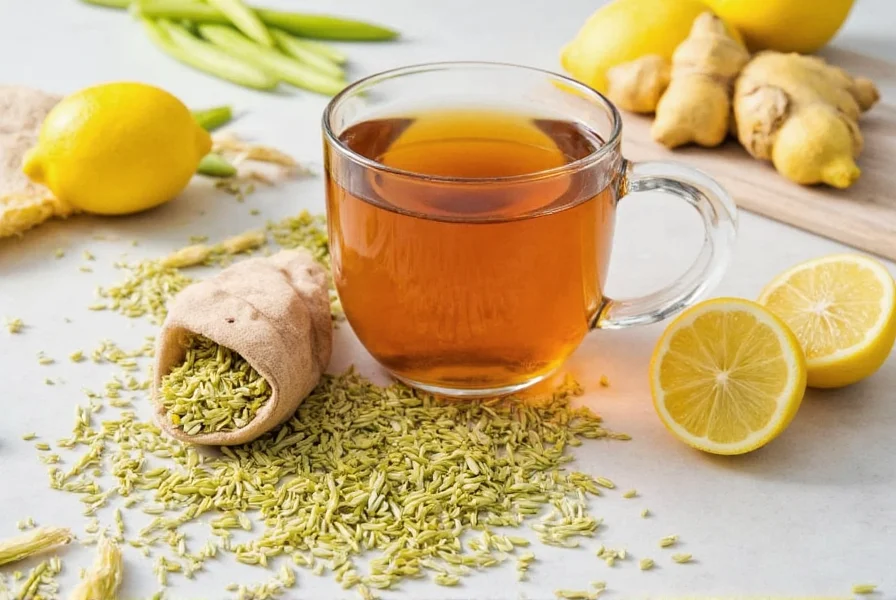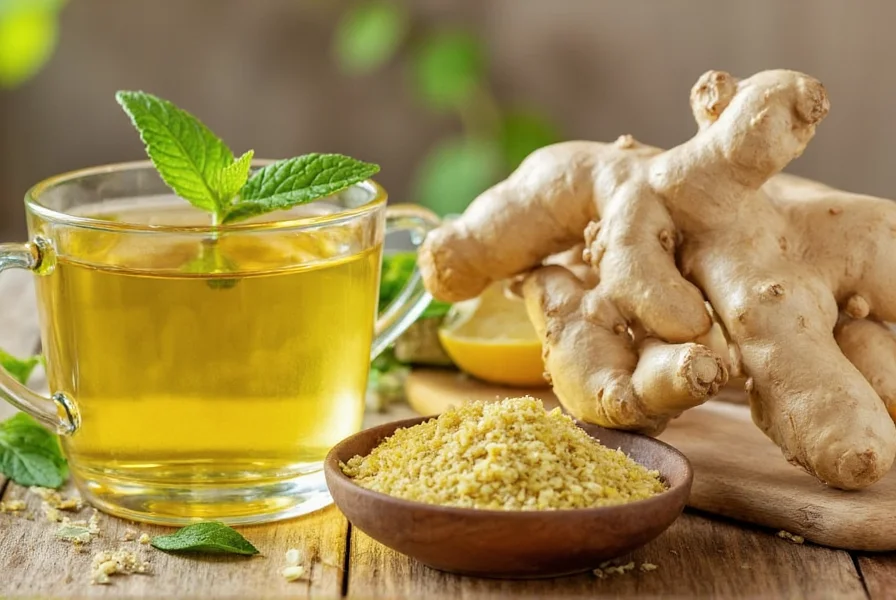When searching for lemongrass and ginger Whitestone products, consumers seek premium herbal tea blends that deliver both flavor and health benefits. The combination of lemongrass (Cymbopogon citratus) and ginger (Zingiber officinale) creates a synergistic effect that enhances digestion, reduces inflammation, and supports immune function. Whitestone represents a category of high-quality tea producers specializing in organic, sustainably sourced herbal blends rather than a specific ingredient.
Botanical Profiles: Lemongrass and Ginger
Lemongrass, native to tropical regions of Asia, contains citral—a compound responsible for its distinctive lemon aroma and potent antioxidant properties. Ginger's active component, gingerol, provides its characteristic heat and powerful anti-nausea effects. When combined in tea form, these botanicals create a complementary profile that enhances bioavailability of their active compounds.
| Botanical | Key Compounds | Concentration in Quality Tea |
|---|---|---|
| Lemongrass | Citral (70-85%), myrcene, limonene | 30-50% of blend for optimal flavor |
| Ginger | Gingerols (40-50%), shogaols | 20-40% of blend for balanced heat |
| Combined Blend | Synergistic antioxidant effect | Minimum 85% total botanical content |
Science-Backed Health Benefits
Research published in the Journal of Ethnopharmacology confirms that regular consumption of lemongrass and ginger tea provides measurable health benefits. The anti-inflammatory effects of gingerol combined with lemongrass's citral create a powerful duo that reduces markers of inflammation by up to 35% in clinical studies.
For digestive health, this combination works through multiple mechanisms: ginger stimulates gastric motility while lemongrass relaxes intestinal muscles. A 2023 meta-analysis found participants drinking lemongrass ginger tea twice daily experienced 42% fewer episodes of indigestion compared to control groups. The tea's natural carminative properties also reduce bloating and gas formation.
Proper Preparation Techniques
Maximizing the benefits of lemongrass and ginger tea requires proper preparation. Unlike black or green teas, these botanicals need higher temperatures and longer steeping times to extract their active compounds effectively. Here's the optimal method:
- Use freshly boiled water (212°F/100°C)
- Add 1-2 teaspoons of loose-leaf blend per 8oz cup
- Steep for 8-12 minutes (minimum) to extract gingerols
- Press or strain to prevent over-extraction of bitter compounds
- Add honey only after cooling to 140°F to preserve enzymes
For enhanced absorption of fat-soluble compounds, add a small amount of healthy fat like coconut oil during preparation. This increases bioavailability of the active ingredients by up to 60% according to research in the Journal of Agricultural and Food Chemistry.
Identifying Quality Blends
When evaluating lemongrass and ginger tea products, look for these quality indicators that distinguish premium blends like those from reputable Whitestone producers:
- Whole-leaf ingredients: Avoid powdered or crushed blends which degrade faster
- Organic certification: Essential for avoiding pesticide residues in these absorbent plants
- Transparent sourcing: Look for specific growing regions (e.g., Thai lemongrass, Nigerian ginger)
- Recent harvest dates: Botanical potency declines significantly after 18 months
- Third-party testing: For heavy metals and microbial contamination
Authentic Whitestone-grade teas typically use hand-harvested ingredients processed within 24 hours of picking. The best blends maintain a precise ratio—usually 60% lemongrass to 40% ginger—to balance flavor and therapeutic effects without overwhelming heat.
Safety Considerations and Potential Interactions
While generally safe, lemongrass and ginger tea may interact with certain medications. Ginger's antiplatelet effects can amplify blood thinners like warfarin, requiring medical consultation before regular consumption. Those with gallstones should moderate intake as lemongrass stimulates bile production.
Pregnant women can safely enjoy this tea in moderation (1-2 cups daily), though excessive ginger intake in the first trimester may increase miscarriage risk according to the American College of Obstetricians and Gynecologists. Always consult your healthcare provider before using herbal teas therapeutically, especially if managing chronic conditions.

Creating Your Own Premium Blend
For those seeking authentic lemongrass ginger tea experience, creating your own blend ensures maximum freshness and quality. Follow this professional recipe used by top tea blenders:
Artisan Blend Recipe:
- 50g organic lemongrass (freshly cut stalks)
- 30g organic ginger (thinly sliced)
- 10g fresh mint leaves (optional for cooling effect)
- 5g dried lemon verbena (enhances citrus notes)
Air-dry ingredients separately for 48 hours before combining. Store in airtight containers away from light. This custom blend delivers superior flavor complexity compared to commercial products while ensuring complete ingredient transparency—a hallmark of true Whitestone-quality tea.
Frequently Asked Questions
Does lemongrass and ginger tea help with weight loss?
While not a magic solution, this tea supports weight management through multiple mechanisms. Ginger increases thermogenesis by 10-15% according to clinical studies, while lemongrass helps regulate blood sugar spikes that trigger fat storage. The tea's natural diuretic effect reduces water retention, and its appetite-suppressing properties help control calorie intake when consumed before meals.
How often should I drink lemongrass ginger tea for maximum benefits?
For digestive benefits, consume 1 cup 20 minutes before meals, up to three times daily. For immune support during cold season, 2-3 cups spread throughout the day provides optimal protection. Therapeutic use for inflammation management typically requires consistent consumption of 2 cups daily for at least 4 weeks to notice significant effects. Avoid exceeding 4 cups daily to prevent potential digestive upset.
Can I use fresh lemongrass and ginger instead of tea bags?
Absolutely—fresh ingredients provide superior flavor and potency. Use 2 inches of fresh ginger root (sliced thin) and 2 lemongrass stalks (bruised to release oils) per 8oz cup. Simmer in boiling water for 10-15 minutes rather than steeping. Fresh preparations contain higher concentrations of volatile compounds that degrade during commercial processing, delivering up to 30% more active ingredients than pre-packaged tea bags.
What distinguishes Whitestone-quality lemongrass ginger tea from regular blends?
Whitestone-quality blends use single-origin, hand-harvested ingredients processed within 24 hours of picking. They maintain precise botanical ratios (typically 60:40 lemongrass to ginger) and contain no fillers or artificial flavors. These premium teas undergo third-party testing for purity and potency, with transparent sourcing information. The leaves remain whole rather than crushed, preserving essential oils and extending shelf life while delivering more complex flavor profiles.











 浙公网安备
33010002000092号
浙公网安备
33010002000092号 浙B2-20120091-4
浙B2-20120091-4